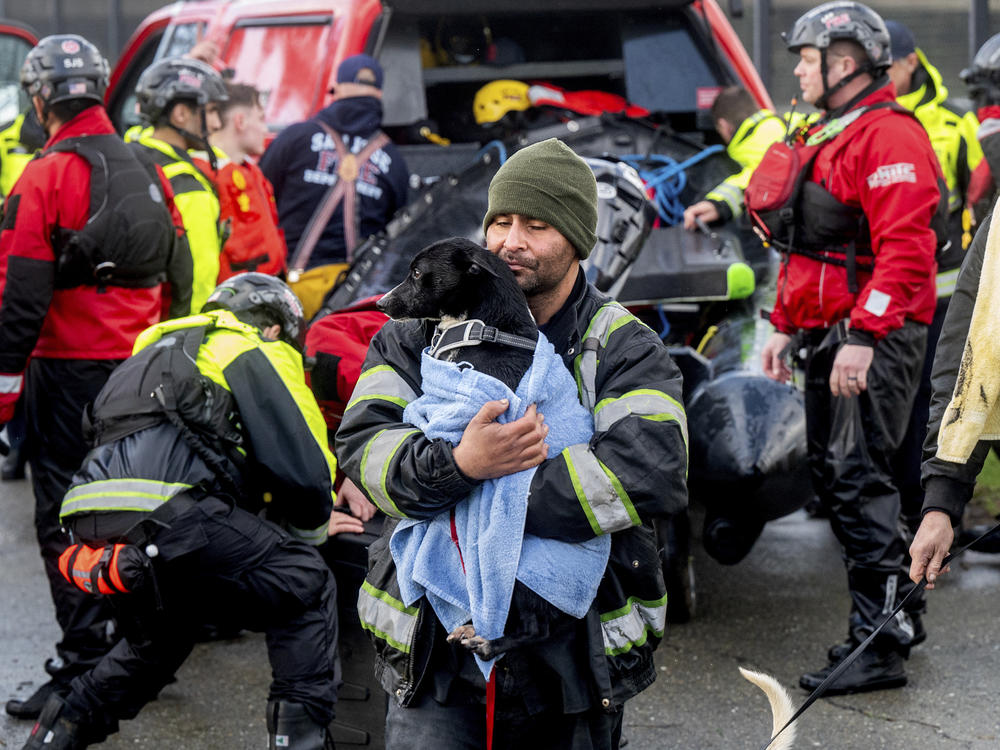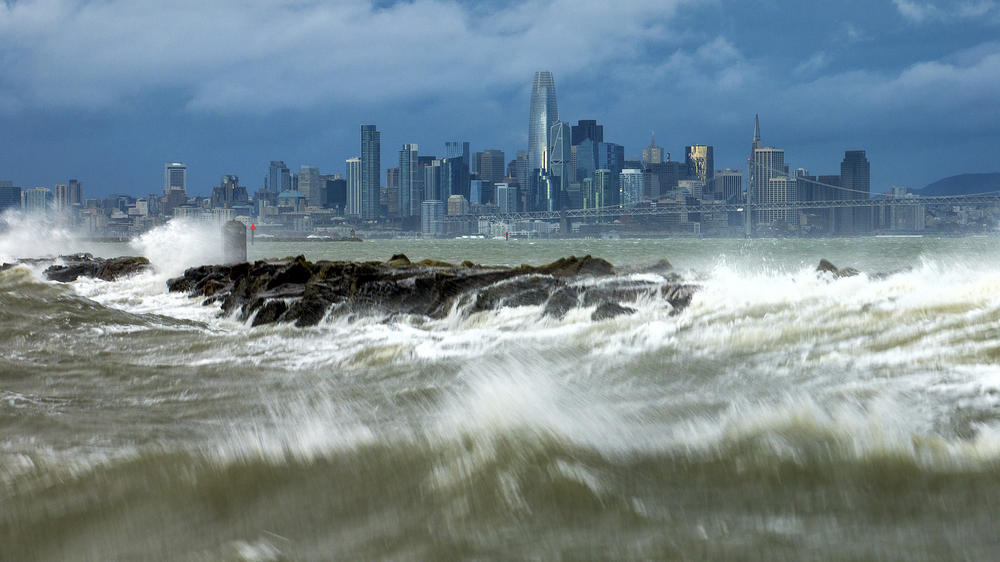Section Branding
Header Content
Hundreds of thousands are without power as atmospheric river churns down California
Primary Content
Updated February 5, 2024 at 4:32 AM ET
Hundreds of thousands of people across California are waking up Monday morning without electricity, as a major rain and wind storm works itself south, just days after a separate storm drenched the area.
More than 600,000 customers were without electricity early Monday, according to poweroutage.us, primarily in Northern California.
Meteorologists and local officials have warned residents in Los Angeles and beyond to prepare for potentially life-threatening conditions as the storm moved south.
"This is one of the most dramatic weather days in recent memory," the National Weather Service said in an online update Sunday night. "The current focus for the most dangerous portion of this system has now shifted to LA County where multiple flash-flood warnings are in effect."
The storm — known as an atmospheric river — could drop as much as 8 inches of rain along the coast and in valley areas and more than a foot in the foothills and mountains, the NWS predicted. Rain could fall at a rate of more than 1 inch per hour in some areas.
Heavy showers and thunderstorms combined with "very dangerous" winds also increased the chances of potentially dangerous flash flooding and rough surf, with flood watches in effect across the area.
California Gov. Gavin Newsom declared a state of emergency on Sunday in eight Southern California counties: Los Angeles, Orange, Riverside, San Bernardino, San Diego, San Luis Obispo, Santa Barbara and Ventura.
"California: this is a serious storm with dangerous and potentially life-threatening impacts. Please pay attention to any emergency orders or alerts from local officials," Newsom said in a statement.
By late Sunday morning, meteorologists had recorded wind gusts above 80 miles per hour in some areas and the NWS issued a hurricane-force wind warning for part of the coast near San Francisco.
"This is an all-hands-on-deck effort," said Los Angeles Mayor Karen Bass. "There are indications that the coming storm could be as strong as Tropical Storm Hillary was in August."
The NWS said people should expect roads and freeways to flood and close, homes and businesses to take on water, and trees to fall in the powerful winds.
Officials ordered residents in parts of Los Angeles, Ventura and Santa Barbara counties to evacuate, LAist reported. Part of San José, in Santa Clara County, was also under a mandatory evacuation order.
Several school districts have already canceled Monday classes or warned parents they might, and NASCAR moved the Busch Light Clash race one day earlier to Saturday evening to avoid the wet and windy forecast.
California's Office of Emergency Services said it had prepositioned fire engines, personnel and other resources in multiple counties to help respond to the storm when it arrived.
San Diego County was giving people sandbags and sand that could be used to protect against flooding, and state officials were urging residents to travel only if absolutely necessary.
Atmospheric rivers are narrow bands that transport water vapor from the tropics to the West Coast of the U.S. When they are especially windy and filled with large amounts of water vapor, atmospheric rivers can unleash extreme weather.
On Sunday, the powerful storm converging on Southern California was expected to drop 4 to 8 inches of rain in lower-lying areas, with 8 to 14 inches of rain in the foothills and mountains. Rain began Sunday morning and was expected to intensify as the day wore on.
Officials in Santa Barbara said early Sunday that heavy rainfall was on the way but strong winds had already arrived. The NWS predicted wind gusts upwards of 60-70 miles per hour, which could topple trees and cause power outages.
Potentially life-threatening flooding would likely also be widespread, officials warned. Coastal flooding was possible, and flash flooding was predicted for parts of the San Joaquin and Sacramento Valleys on Sunday as well as in upslope portions of the Sierra Nevada.
Snow could also begin in some areas late Monday, and the rain and strong winds brought by the storm were expected to last through Tuesday night for many areas.
Copyright 2024 NPR. To see more, visit https://www.npr.org.



